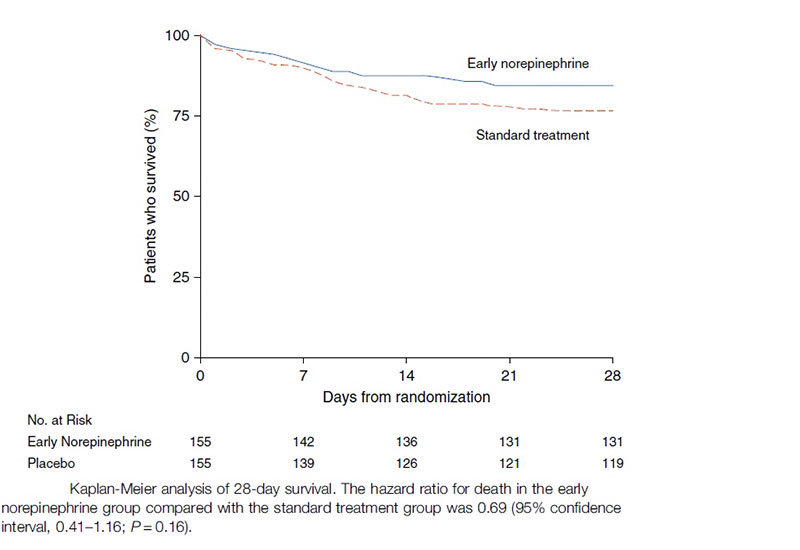Early Use of Norepinephrine in Septic Shock Resuscitation (CENSER): A Randomized Trial
Faculty of Medicine Siriraj Hospital, Mahidol University



Early Use of Norepinephrine in Septic Shock Resuscitation (CENSER): A Randomized Trial
Faculty of Medicine Siriraj Hospital, Mahidol University
Research Title:
Early Use of Norepinephrine in Septic Shock Resuscitation (CENSER): A Randomized Trial
Researcher (s):
Assoc. Prof.Chairat Permpikul (Division of Critical Care, Department of Medicine Siriraj Hospital, Mahidol University)
Assoc. Prof.Surat Tongyoo (Division of Critical Care, Department of Medicine Siriraj Hospital, Mahidol University)
Dr.Tanuwong Viarasilpa (Division of Critical Care, Department of Medicine Siriraj Hospital, Mahidol University)
Dr.Thavinee Trainarongsakul (Division of Critical Care, Department of Medicine Siriraj Hospital, Mahidol University)
Dr.Tipa Chakorn (Department of Emergency Medicine, Faculty of Medicine Siriraj Hospital, Mahidol University)
Mr.Suthipol Udompanturak (Office of Research and Development, Faculty of Medicine Siriraj Hospital, Mahidol University)
Background: Norepinephrine is recommended as vasopressor of choice for septic shock resuscitation. However, the appropriate time for initiation has not been clarified. Whether it should be given after optimal fluid replacement or at the beginning of resuscitation is ongoing debated.
Methods: In this double-blind, single-center randomized, placebo-controlled trial, we enrolled adult severe sepsis/ septic shock patients within the 1st hour of diagnosis. Patients were randomly assigned (1:1 ratio) to early norepinephrine (0.05 mcg/kg/min) administration (early NE group) or standard treatment (standard group) according to surviving sepsis campaign 2012. The primary outcome was rate of hemodynamic restoration (MAP>65 mmHg and evidences of adequate tissue perfusion) at 6 hours after resuscitation.
Results: A total of 310 patients were included, 155 patients in early NE group and 155 patients in standard therapy group. Median time (minute) from diagnosis to the initiation of norepinephrine was shorter in early NE than standard group (70[50-90] vs. 167[125-273]; p<0.001). Patients in early NE group had higher rate of primary outcome achievement (76.1% vs. 48.4%; odds ratio 3.4; 95%CI, 2.09-5.53; p<0.001) than standard group. The 28-day mortality was also lower but did not reach significant difference (15.5% vs. 21.9%; p=0.15). There was lower rate of cardiogenic pulmonary edema (14.4% vs. 27.7%; p=0.004) and arrhythmia (11% vs. 20%; p=0.03) in the early NE group.
Conclusions: The administration of low dose norepinephrine at the beginning of severe sepsis/ septic shock resuscitation resulted in shorter hypoperfusion period and tended to decrease mortality (Funded by Siriraj Hospital; CENSER ClinicalTrials.gov number, NCT01945983)

Publishing:
• Permpikul C, Tongyoo S, Viarasilpa T, Trainarongsakul T, Chakorn T,Udompanturak S. doi: 10.1164/rccm.201806-1034OC. Early Use of Norepinephrine in Septic Shock Resuscitation (CENSER): A Randomized Trial. Am J Respir Crit Care Med 2019; 199: 1097 – 1105.
Key Contact Person:
Assoc. Prof.Chairat Permpikul
Faculty of Medicine Siriraj Hospital, Mahidol University
chairat.per@mahidol.ac.th